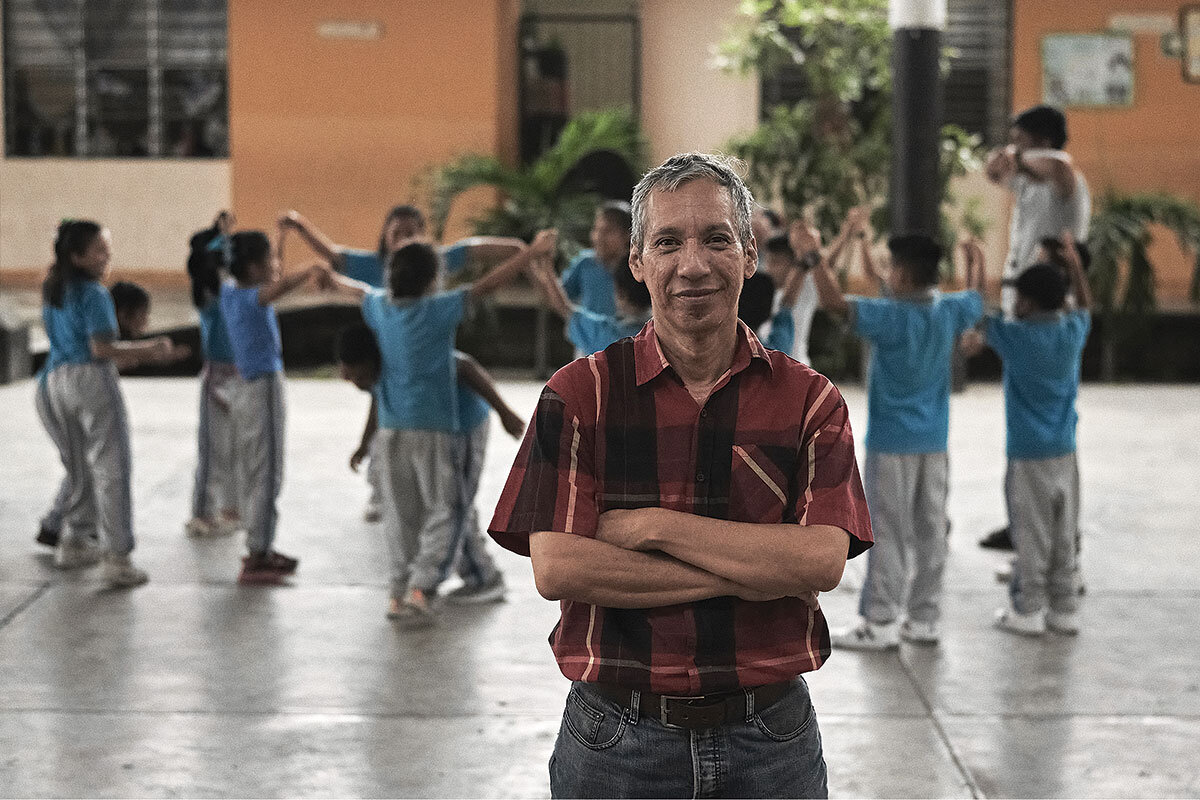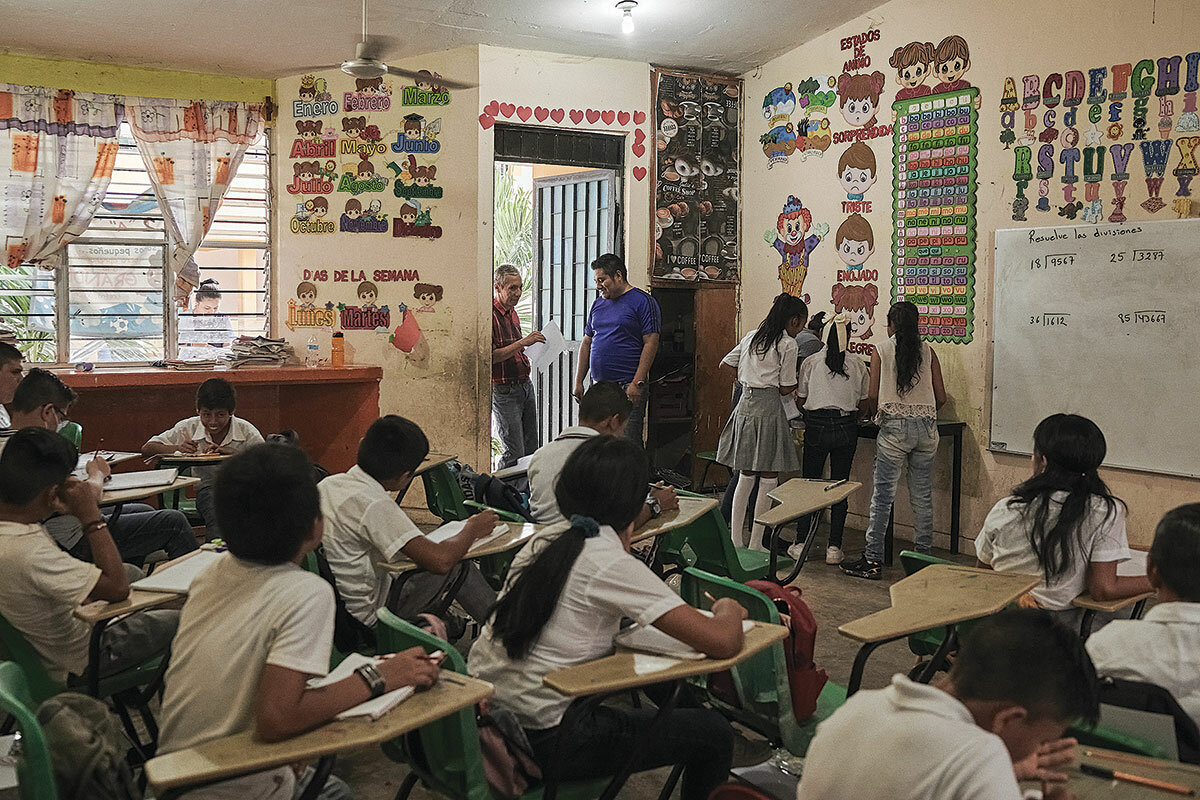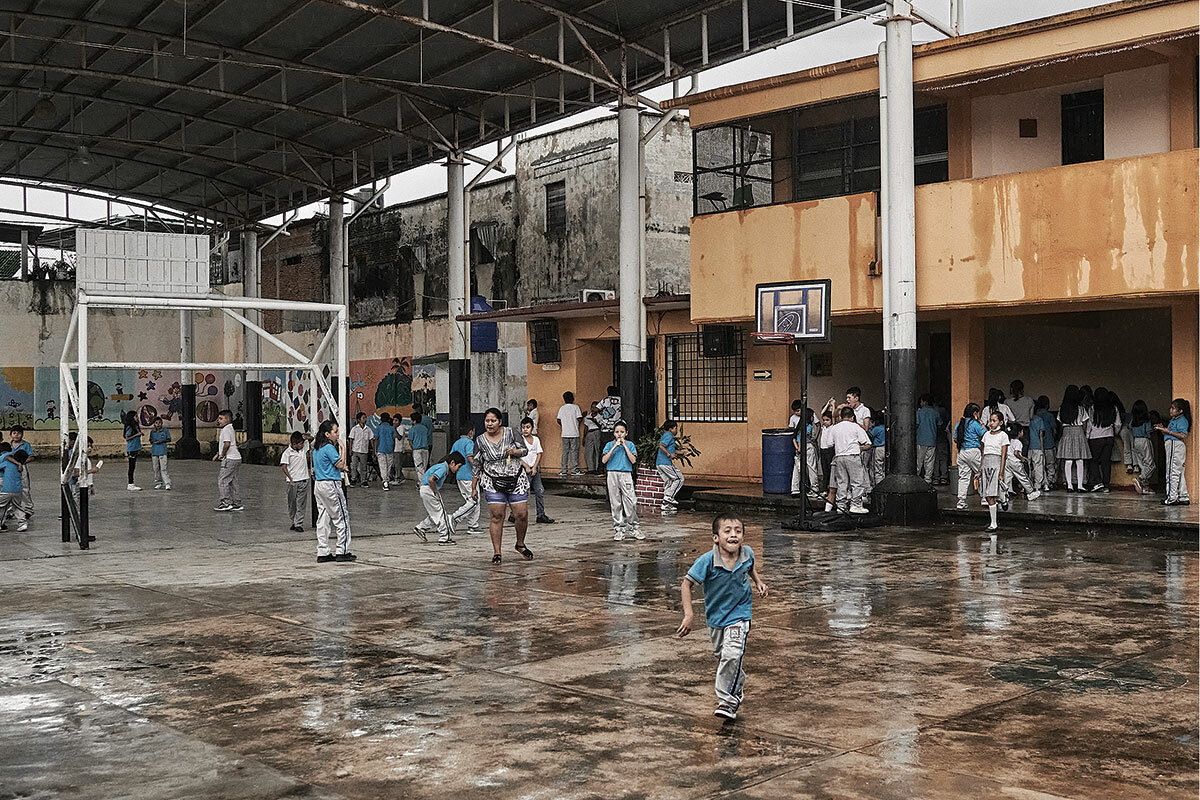Why this Mexican school pushes to get migrant children in the classroom
Loading...
| Tapachula, Mexico
Heavy drops of a tropical downpour are still falling when students at Venustiano Carranza Garza public elementary school head out for recess on a recent afternoon. Everyone’s playing together – throwing balls, playing tag, and linking arms – underscoring a rule laid out by the school principal, Carlos García Roblero: No one should be left out.��
That may sound like a Utopian goal (or a standard “Play nice!” instruction), but the mantra goes far beyond the schoolyard.��
More than 41,000 migrants from everywhere from Venezuela and Haiti to Cameroon and Uzbekistan were detained in the southern Mexican city of Tapachula in 2022. Migrants are often en route to the United States, seeking work, security, or simply a better future. While most migrants want to keep moving north, many are forced to take a pause once they arrive in Mexico as they apply for visas, try to get an appointment with U.S. officials, or consider seeking asylum here. As regional migratory patterns shift to include more families, schools like this one that make it a priority to teach any child interested in learning can be a haven.
Why We Wrote This
Who is responsible for the education of the migrant children passing through Mexico? School principal Carlos García Roblero sees it as his duty to include everyone.
Mr. García Roblero’s mission to give all children equal opportunity is rooted in his four decades of teaching in this rural state of Chiapas, experience educating across language barriers in Indigenous communities, and desire to listen to and connect with students in what he calls the “classroom trench,” despite his growing leadership role.
“When children come to my school, I don’t label whether they are foreigners or not,” says Mr. García Roblero. “I always tell my teachers that education is a challenge. ... But you are going to move the world with what you can and how you can – despite the obstacles.”
Overcoming suspicion��
Born in 1964 in Siltepec, a municipality nestled in the breathtaking peaks of the Sierra Madre de Chiapas, Mr. García Roblero moved with his mother to Tapachula as a baby. His mom was a live-in domestic worker for a family of teachers. Mr. García Roblero was welcomed into the family like a bonus brother and son. And the love of reading and learning he gained in that home laid the cornerstone of his future career.��
At the age of 10, he learned to type, and years later, he graduated from the Escuela Normal Fray Matías de Córdova in Tapachula. Following the Mexican Revolution, these “normal schools” promoted rural teacher-training programs known to focus on equality and social transformation – and drew aspiring teachers from some of the most impoverished parts of Mexico.����
His first years as an elementary school teacher took him back to the Sierra Madre, to a community where he recalls children came to school with only a small pile of tortillas and chile peppers for lunch. He later became the principal of a school in the Indigenous Tulijá Tseltal Chol region where 90% of the students spoke only Ch’ol and faced extreme economic hardships.��
“Since I have been in contact with children, I have been with vulnerable groups,” says Mr. García Roblero.
Thanks to these experiences, the Venustiano Carranza Garza stands out as an inclusive space today. There were 190 students enrolled this past academic year, with about 70% from outside Mexico, mainly Guatemala, Honduras, and Cuba. Midyear, he welcomed 27 Haitian students. Despite speaking almost no Spanish, they learned to read in months, he says with delight.��
The dynamics of migration mean that many children are only in Tapachula briefly, an argument many Mexican school officials use to exclude them from formal education. But a short time frame can’t override the responsibility of teachers to act on behalf of children, Mr. García Roblero says.��
As the number of migrants and asylum-seekers has grown in recent years, so, too, has xenophobia. “Suddenly locals are suspicious, less open; they’re critical of migration,” says Karen Pérez, the Tapachula coordinator for the Jesuit Refugee Service.��
The student body is also made up of Mexican children with physical disabilities and those who have never attended school or have been expelled from other institutions for behavior or learning differences. They’re all welcome at this school, which is located near the historic city center and runs for four hours in the late afternoon.
“It has been a challenge to work here, but it enriches you,” says Yaneth Pérez Castellanos, who has taught under Mr. García Roblero for the past three years. “The children don’t say, ‘Oh, she’s not the same as me.’ ... All the children support each other.”��
Good laws, bad practices
Mexico’s Constitution guarantees education as a right of all children. And as of 2015, school enrollment is mandatory and can’t be conditioned on documentation, nationality, or migratory status. But in practice, many schools fail to comply, says Rosalba Rivera, coordinator for migrant children at the Institute for Women in Migration.
Rucelda Martín López knows this well. Originally from the Guatemalan department of San Marcos, she’s lived in Tapachula for 10 years. Her oldest son lost a year of schooling when they first moved to the area because schools kept insisting, “No documents, no enrollment,” she recalls.��
“He watched the other children going off to study and felt sad he couldn’t do the same,” says Ms. Martín López. That ended when she found Mr. García Roblero’s school, where three of her children currently study.
“Especially in the southern states, school officials will deny inscription to migrant children,” says Ms. Rivera. “Sometimes, a little out of unawareness and a little out of fear, parents leave and resign themselves to the fact that their child was not accepted into the school.”
The tendency toward exclusion can overwhelm Mr. García Roblero. “It’s a crime committed against childhood,” he says.
Despite being Mexican by birth, Verónica Crisostomo Gómez’s daughters were denied an education because their mother, a Guatemalan, lacked the needed paperwork. Since they met Mr. García Roblero, things have changed. “Now, every day at 12 o’clock, the girls say, ‘We’re going to get ready to go to school,’” Ms. Crisostomo Gómez says with pride.��
Shortly before recess on a recent afternoon, Mr. García Roblero watches students carefully rehearse the escolta, a practice of escorting the Mexican flag during official celebrations. In most schools, this is reserved for only the most outstanding students.��
“In my school, anyone who wants to can participate,” says the principal. “Here, someone from Guatemala has proudly carried the flag,” he says. “Nobody complains, and the child is happy.”






